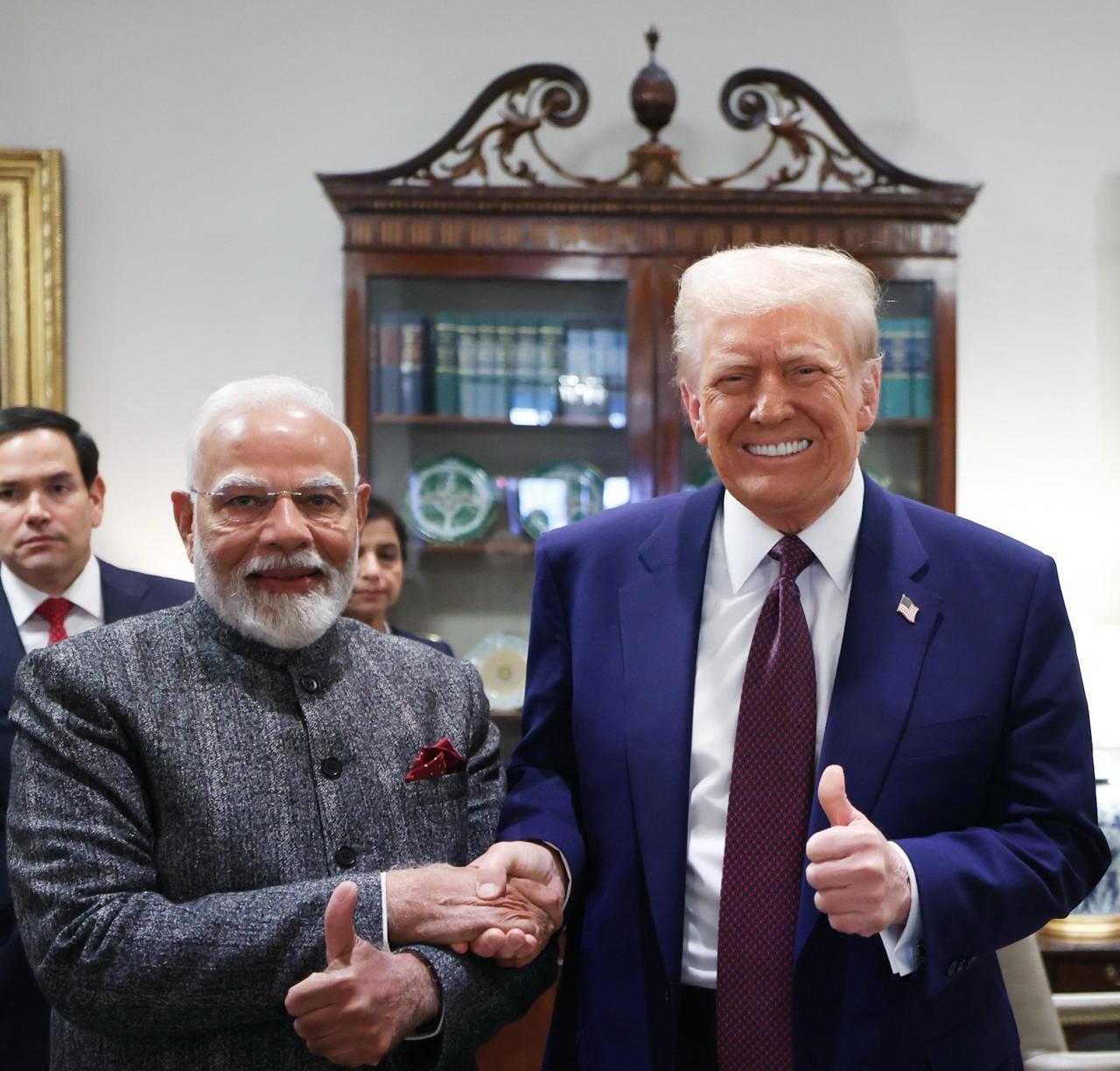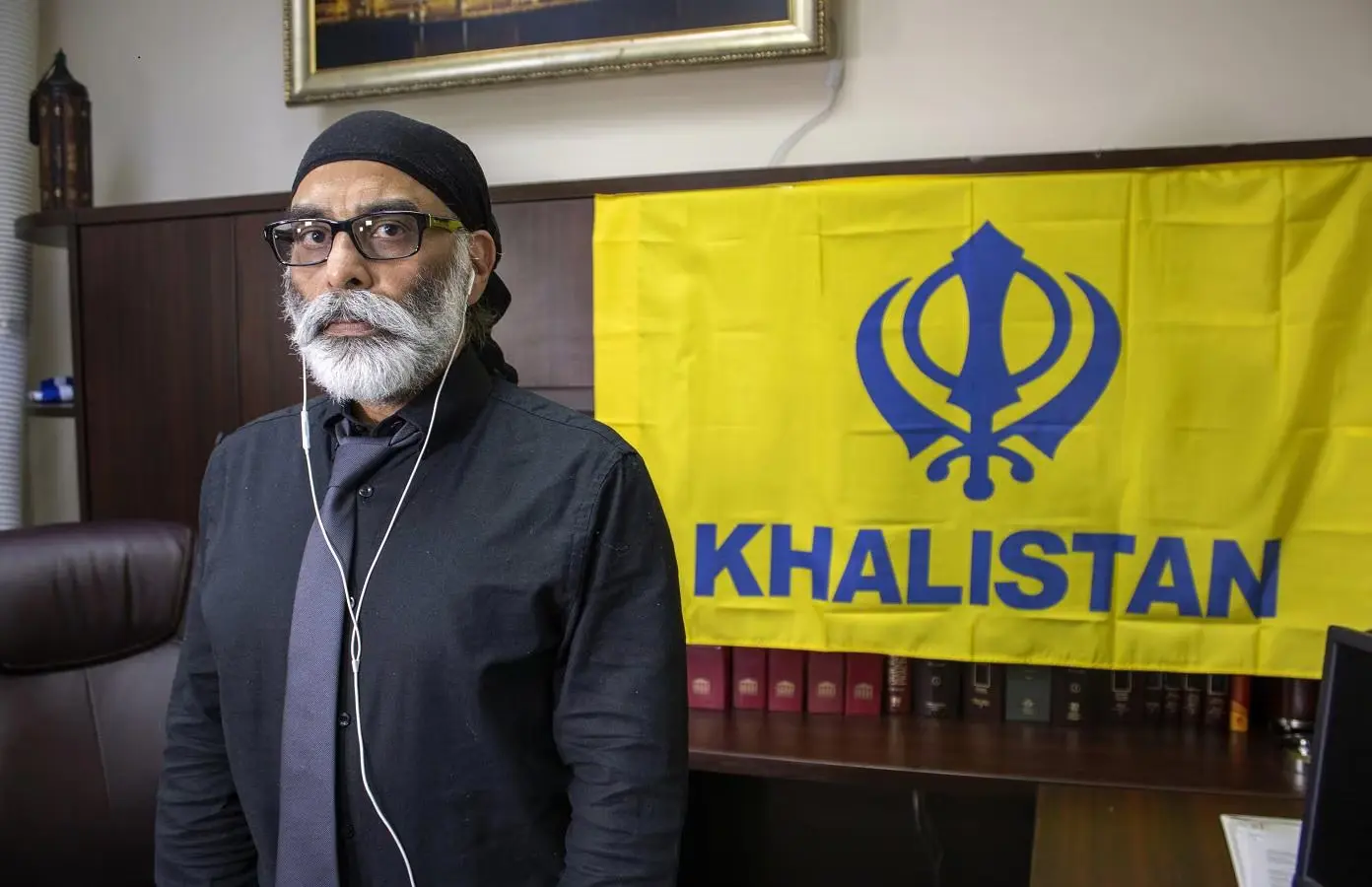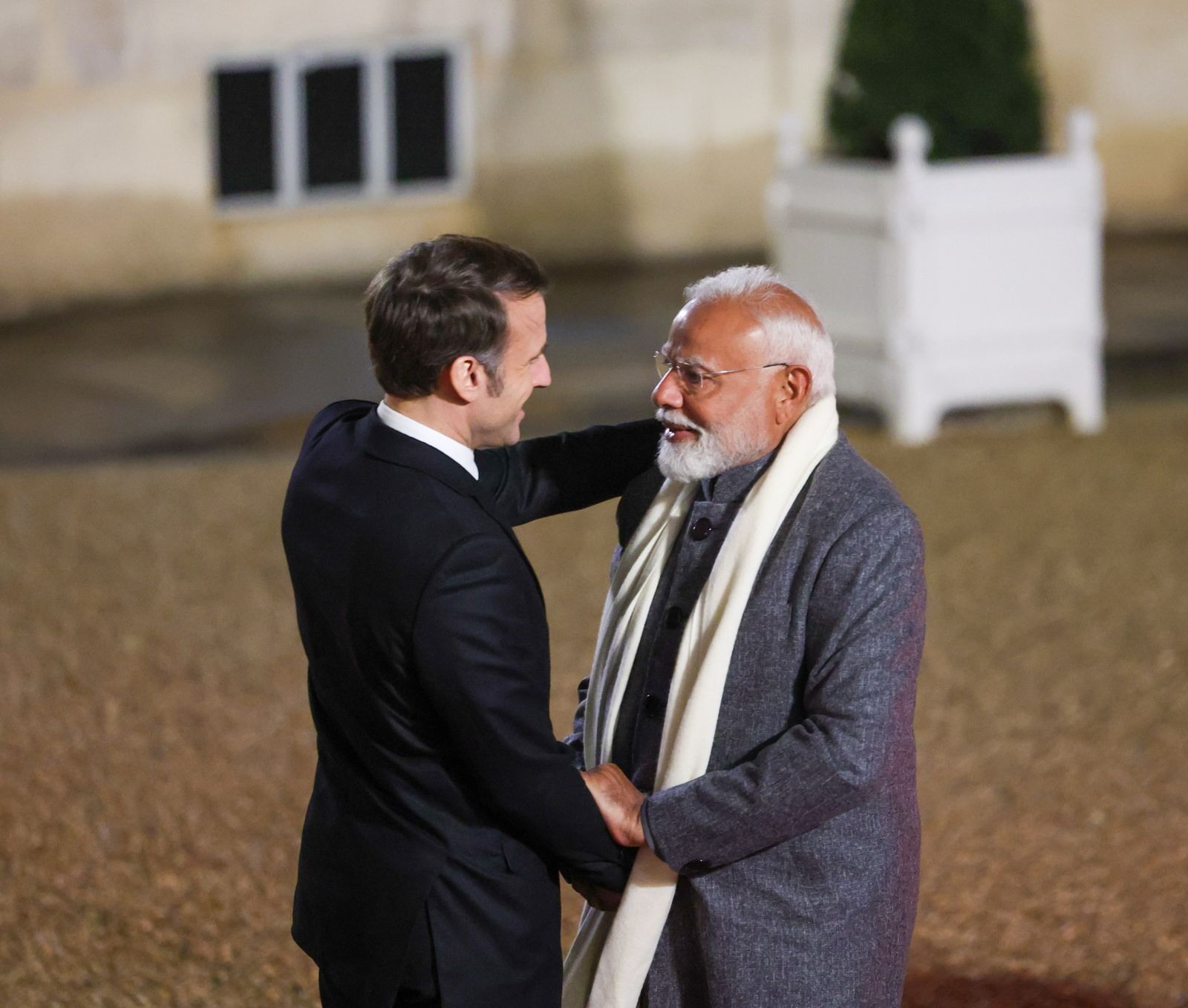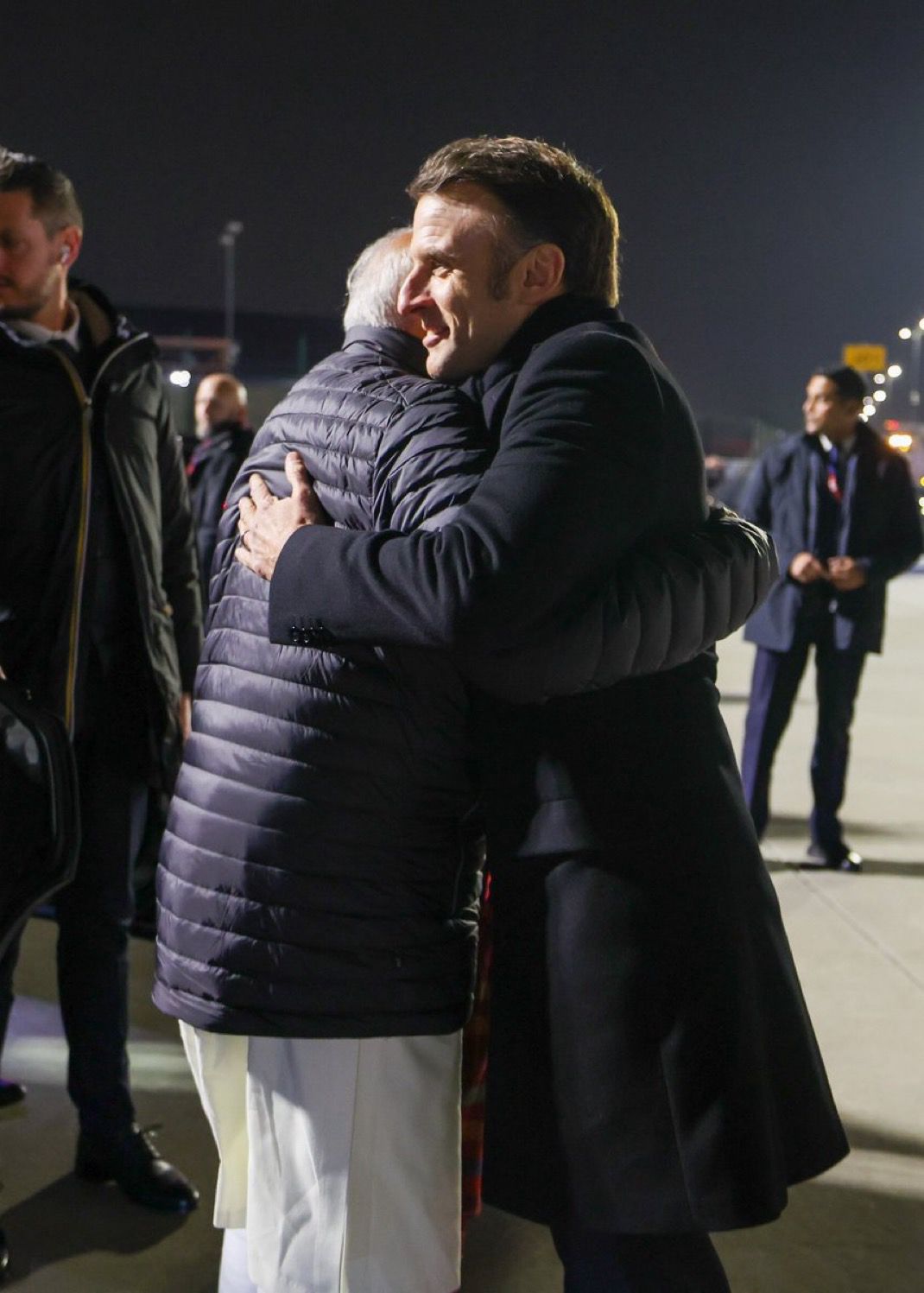Modi-Trump summit meet sets stage for a broad spectrum of bilateral interests
Global News
Prime Minister Narendra Modi and President Donald Trump exchanging a handshake during their summit, marking a significant step in enhancing India-US bilateral ties.
News in Brief
Prime Minister Narendra Modi's recent visit to the United States, marking his first since Donald Trump's re-election, strengthened the India-US strategic partnership. Key outcomes include a target to boost bilateral trade to $500 billion by 2030, increased military cooperation, energy deals, and technological advancements. Discussions also covered sensitive issues like immigration, counter-terrorism, and potential mediation in the India-China border dispute. The visit reinforced the cultural connection between the nations and highlighted mutual benefits under the "MEGA" partnership framework.
New Delhi: Prime Minister Narendra Modi's visit to the United States was marked by a series of high-level engagements that underscored the strengthening of the India-US strategic partnership. This visit was particularly noteworthy as it was Modi's first since Donald Trump's re-election, setting the stage for discussions that covered a broad spectrum of bilateral interests.
One of the primary outcomes was the agreement to elevate the bilateral trade target to $500 billion by 2030, signaling a significant boost to economic ties. Modi and Trump announced their intention to negotiate a comprehensive trade deal focusing on market access, tariff reductions, and supply chain integration across goods and services. This move is seen as an attempt to balance the trade deficit that has been a point of contention in the past, with Trump's policy of reciprocal tariffs looming over international trade discussions.
In the realm of defense, the visit yielded concrete outcomes with Trump announcing an increase in military sales to India, including the potential transfer of F-35 stealth fighter jets. This development is not just about enhancing India's defense capabilities but also about deepening military cooperation and interoperability between the two nations. The extradition of Tahawwur Rana, accused in the 2008 Mumbai terror attacks, was also confirmed, marking a significant moment in counter-terrorism collaboration.
Energy was another focal point, with discussions aimed at expanding India's purchase of US oil and gas. This is pivotal for India, given its burgeoning energy needs, and could play a crucial role in narrowing the trade deficit. The talks also touched on technological collaborations, with Modi meeting key figures like Elon Musk to discuss advancements in AI, semiconductors, and space, reflecting an intent to harness cutting-edge technologies for mutual benefit.
The visit was not without its geopolitical undertones. Trump offered to mediate in the India-China border dispute, indicating a willingness to play a more direct role in regional conflicts. This gesture, while appreciated, highlights the complex dynamics of India-US-China relations amidst ongoing tensions.
Culturally and diplomatically, Modi's visit resonated with the Indian diaspora in the US, reinforcing the cultural bridge between the two nations. The warm reception from the community and the personal chemistry between Modi and Trump were evident, with the latter presenting Modi with a signed copy of his book and a photograph from his previous visit to India.
However, the visit also navigated through some sensitive issues. The topic of illegal immigration was discussed, with Modi stating India's readiness to take back verified Indian citizens living unlawfully in the US. This reflects India's commitment to addressing global immigration challenges.
Modi's visit to the USA was a blend of strategic foresight and immediate gains. It laid down a roadmap for enhanced cooperation in trade, defense, energy, and technology while also addressing critical issues like immigration and counter-terrorism. The visit underscored a 'MEGA partnership' for prosperity, combining Modi's 'Make India Great Again' (MIGA) vision with Trump's 'Make America Great Again' (MAGA) to create a mutually beneficial alliance. The outcomes of this visit are expected to shape the future trajectory of India-US relations, promoting peace, prosperity, and strategic autonomy in a rapidly changing global landscape.
Advertise with US
Advertise with US



